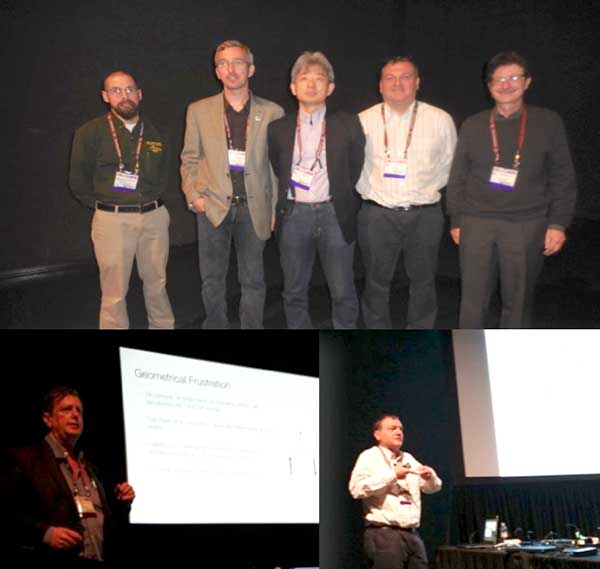Muons Around the World
By Jason S Gardner, FIP Executive Committee Member-at-Large
Comprehending the fundamental physical properties of matter at a microscopic level enables scientists to design and develop new materials for tomorrow’s applications. For these reasons, scientists are interested in studying microscopic structures and processes in a wide range of materials and travel to large international establishments to perform their condensed matter research. Free electron lasers, synchrotron light sources and neutron scattering facilities are three such centers. Like X-rays and neutrons, muons also interact with matter providing researchers with a sensitive probe of internal magnetic fields and electronic configurations of materials.
There are only four facilities around the world producing muon beams: TRIUMF in Canada, ISIS in UK, PSI in Switzerland and JPARC in Japan. These large facilities produce beams of subatomic particles, like muons, to non-destructively study different materials (magnetic, superconductor semiconductor) at the atomic level.
International facilities are of primary interest for the Forum on International Physics (FIP), being strongly focused on international scientific collaborations. For this reason, the FIP hosted, at March Meeting 2017, a dedicated session on the use of muons in condensed matter physics (Session P22: Condensed Matter Research at Global Muon Facilities)
The FIP session on muons was chaired by J. S. Gardner, from the NSRRC in Taiwan and FIP Member at Large. The session hosted five international invited speakers, Graeme Luke, Elvezio Morenzoni, Jun Suguyama, Rick (P.W.) Mengyan and Amit Keren who demonstrated how muons can be employed to study the basic properties of matter and used as support their research either applied or pure.
The first speaker, Prof. G. Luke (McMaster, Canada) introduced how muons are an excellent local probe of magnetism in exotic quantum magnets. Prof. Morenzoni (PSI, Switzerland) presented a relatively new technique developed to study thin films and interfaces. Dr Jun Suguyama (Toyota Central Research and Development Laboratories) explained how the intrinsic nature of battery and hydrogen storage materials are investigated when the positively charged muon binds with an electron (hydrogen) to form a complex known as muonium. Prof. Rick (P.W.) Mengyan from Northern Michigan University revealed how muons can be utilised in semiconductors research to understand their electronic properties. Specifically, he showed how low concentrations of hydrogen impurities, which dramatic affect on the bulk properties, can be detected as muonium. The last speaker, Prof. Amit Keren, from the Technion in Israel, spoke about his research in high temperature cuprate superconductors and how muons are elucidation the coupling between magnetic super-exchange and the superconducting transition temperature.
The FIP session on muons at the March Meeting 2017 was conceived as an introduction to muon research around the world. The session arouse the interest of the participants providing an overview of the technique and facilities chosen to represent the state of the art of condensed matter science in diverse fields.

Top: Rick (P.W.) Mengyan, J S Gardner, Jun Suguyama, Amit Keren and Elvezio Morenzoni. Bottom: Graeme Luke (left) and Amit Keren (right) presenting their work during the session.
